Growing greens in a greenhouse as a business: basic rules
Growing greens for sale - one of the most profitable and uncomplicated types of business. But it requires constant attention, knowledge, certain skills.
Content:
- Features of growing greens for sale
- Growing dill for sale
- Proper cultivation of parsley
- Green onion growing technology
- Growing spinach
- Features of growing lettuce
Features of growing greens for sale
Growing greenery has relatively low costs (this includes the cost of inventory, arranging greenhouses, purchasing fertilizers). Its advantages are associated with the constant high demand for products, cheap seeds, ease of growing greens. More profit can be obtained by growing greens in the winter. But for this you need to purchase and install a greenhouse, equip it with heating. Biofuels can be used. In this case, the substrate layer should be 10-12 cm.
You can grow greens in the basement. It is used instead of greenhouses. But in this case, you need to provide high-quality lighting. It is necessary to install energy-saving lamps in the room. Reflective foil screens will help increase the illumination. Growing greens in a greenhouse is beneficial in the south. In the north, electricity costs may not pay off.
In summer, greens are cheaper, but due to large volumes you can earn more.
The result of growing any kind of greenery depends on several factors:
- Selection of varieties.
- The quality of the soil in the beds.
- Weather conditions when growing in the garden.
- Seedling care.
There is only one drawback of this kind of product, but it is very significant: a short shelf life. The competition among the sellers of greenery in the market is quite high. Therefore, for those who are not confident in their abilities, it is better to start their business from small areas. Over time, having received income, invest it in the expansion of production, including the construction and arrangement of a greenhouse.
You can grow greens for sale:
- In small batches. The products are grown in a small area and sold on the market.
- Industrial cultivation in greenhouses. You can practice one type of greenery or combine several. Among all types of greens for sale, the most commonly grown Dill, parsley, salad, onion feather. Are becoming more and more popular basil, coriander, spinach, sorrel.
Growing dill for sale
Dill buy all year round. Cut off shoots up to 10 cm high. Dill is consumed fresh, dried or salted. It does not lose its properties when frozen. The seeds are used in folk medicine. Adult plants with mature seeds are placed in jars when vegetables are salted.
Features of growing dill:
- Dill is sown on fertile moist soils. On dry soil, it will also grow, but in this case, the stem will form faster, and the plants will be unsuitable for sale.
- Seeds must be processed before planting. For this, bubbling is carried out. It consists in treating the seeds in water constantly saturated with oxygen. Water temperature 20 ° С, procedure time up to 20 hours.
- If there is no device for bubbling, the seeds are soaked in water for 3 days, changing it every 6 hours.
- Sow the seeds into moist soil immediately after treatment. The depth of the grooves is up to 2 cm.
- Dill grows and develops best at temperatures from 15 to 20 ° C. But he easily tolerates a drop in temperature to minimum positive values. The delicate leaves of dill do not tolerate frost and die.
- The plant is light-loving. If natural lighting is not enough, you need to supplement phytolamps... Dill does not require special feeding. But it responds well to nitrogen fertilization. Presowing soil treatment mineral fertilizers consists in the introduction of superphosphate, ammonium nitrate and potassium chloride. Care consists in watering during a dry period, removing weeds, loosening row spacings.
Harvesting is carried out one month after sowing. Cut off individual large plants or remove the entire area at once. If their height has reached 15 cm, the entire crop is removed, otherwise the remaining plants will throw away their umbrellas and lose their presentation.
There are many varieties of dill. They are distinguished by the ripening period, the richness of the color of the greenery, the presence of a waxy coating and aroma. It is more expedient to grow early varieties for sale. They ripen 10 days earlier than the late ones, and this matters for business. Early varieties have less lush greenery. They need to be removed in time, otherwise they will form a stem and discard the umbrella.
Early varieties are sown in greenhouses or in open areas in early spring. Some of the plants are left to collect seeds. They do not lose their varietal properties, therefore they are suitable for sowing.
Late varieties have more leaves, they can be harvested longer. Late dill is sown in and June. Harvest until August.
Late varieties of dill:
- Tetra
- Kibray
In addition to varieties growing in one stem, bush dill is grown. Its lateral shoots grow in the leaf axils. The stem forms more slowly, which extends the harvest time to one and a half months. More greenery can be harvested from a single plant, which looks like a bush, than from the usual late varieties. Used in southern areas. Popular varieties:
- Gourmet
- Russian size
- Firework
When growing bush dill, you need to provide space for each bush to develop. The row spacing is about 30 m, the spacing in a row is 15 cm. Sowing dill again (up to 3 times per season) or in new areas, you can provide a green conveyor.
Dill is sown in a heated greenhouse at the beginning of March, without heating at the beginning of April. Use line or solid sowing. 15 g of seeds are sown per square meter of area. In summer, greenhouses can be used for growing cucumbers... Then sow the dill again in mid-July for harvest in the fall. Can be used to grow dill in the second half of the summer, the areas vacated after harvest garlic, Luke, early varieties of potatoes.
Proper cultivation of parsley
Parsley - biennial umbrella plant. There are leaf and root types. The advantage of root crops is that both greens and root crops are obtained from them. But the leaf forms up to 100 branches per season, and the root up to 35 pieces.
Parsley is grown in areas where it did not grow last season carrot, cilantro, dill, cumin. Best predecessors - onion, cucumber, zucchini... In the fall, humus is introduced, in the spring - complex mineral fertilizers... Fresh organic matter is not recommended to be introduced, because it causes branching of the root system. The site should be light, the soil should be light and nutritious, neutral or slightly acidic.
Seed sowing rules:
- Parsley seeds are sown at the end of January. Mobile film tunnels are used.
- Parsley seeds are very small. Sown dry, they can germinate in a month or more.
- Therefore, before sowing them germinate... Sparging or soaking in warm water can be used. Accelerates germination by soaking in a solution of Epin or other growth stimulants.
- Then they are dried so that they become free-flowing. To do this, you can pour them onto a dry newspaper, which quickly absorbs excess moisture. By changing a few newspapers, you can quickly achieve the desired level of flowability.
- Up to 1 g of seeds are sown per square meter. The depth of the groove is up to 1.5 cm.The distance between the rows is 30-45 cm.
- The soil must be moist. After sowing, it is a good idea to cover the area with foil. This will help retain moisture and accelerate seed germination.
- You can mulch the area with peat or rotted compost.
In autumn, dry seeds can be sown 2 weeks before the soil freezes. Parsley tolerates a drop in temperature, does not die under the snow, even in winter. The seeds are kept at -8 ° C and germinate at 2 ° C. Seedlings appear in 2-3 weeks. After the formation of 3 true leaves, they are thinned out, leaving a distance of 3 cm between the plants of leaf varieties, and 7 cm for root ones.
Parsley is fed several times per season.
For the leaf, nitrogen fertilizers are used, for the root - potassium-phosphorus fertilizers. Loosens the soil between the rows. Crops of leaf parsley need to be regularly watered, but without stagnation of moisture near the roots. They spend it in the morning or in the evening. Two waterings per season are enough for root parsley. Greens for sale are harvested as they grow up throughout the season. Seeds for sowing are harvested in the second year of the growing season.
Leaf parsley varieties:
- Vitamin
- Sandwich
- Breeze
- Carnival
Curly-leaved varieties:
- Appetizing
- Green pearl
- Lace
Crops of parsley can be affected by:
- Downy mildew
- White rot
- Cercosporosis
For their prevention, the seeds are heated to 50 ° C before sowing. In areas where plants are sick, parsley can be sown after 4 years. If this does not happen, you can sow again. About 1 kg of parsley can be harvested from 1 m2 per season.
Green onion growing technology
Growing onions seems pretty straightforward. After all, almost everyone in childhood installed an onion in a jar of water and looked forward to the appearance of green feathers. But growing in large batches is fraught with some difficulties: a rather large area must be allocated for onions. He is often affected by fungal diseases. Growing in pallets with a depth of 10 cm, stacked on top of each other, will help to solve the problem with the area.
Indoors, feather onions are grown from mid-autumn to May. Daytime temperature 20 ° С, at night up to 15 ° С. If it is lower or higher, growth slows down. The length of daylight hours is 12 hours.
For growing onions on a feather, it is better to use multi-cut varieties that have a short dormant period:
- Stuttgarten
- Bessonovsky
In the presence of 5 primordia, the yield from 1 m2 is approximately 15 kg. To reduce the dormant period, the onion is immersed for half a day in warm water, slightly dried. You can soak the bulbs for 3 days by covering them with burlap and stirring occasionally. Cutting the neck of the constriction and making several vertical cuts at the cut point will help speed up germination. These procedures accelerate germination by a week.
The substrate for forcing onions is prepared from peat, turf and leafy soil.
It should be loose, non-acidic. Add humus and rotted compost. The bulbs in the greenhouse are planted by bridge, without gaps in the rows. For podzimnem cultivation in greenhouses, a half-bridge method is used, leaving up to 3 cm between plants. Cover with a layer of humus 6 cm high. In February, the mulch is removed, a film is installed. Nitrogen fertilizers are applied.
For the prevention of diseases, after planting, it is watered with a pink solution of potassium permanganate. Harvest when a height of 30 cm is reached. The roots of the bulbs are cut, then the feather is separated from the turnip.
Growing spinach
Spinach is an annual or biennial plant of the Marev family. Leaves forming a rosette are used for food. After a while, spinach begins to bloom. A stem appears from the rosette, on which male flowers are formed.The females are located in the leaf axils. Spinach fruits are round or spiny nuts.
Spinach seeds germinate at 4 ° C. Leaves grow at a temperature of 15-18 ° C. When the temperature rises to 20 ° C, an arrow with flowers appears. By this time, the leaves must be harvested. Spinach is a short day plant. Therefore, it throws out the hands if the length of the day exceeds 15 hours. If by this time they did not have time to harvest, break off the top of the stem.
It is best to sow spinach in April and mid-August, then the plants will not shoot, which will allow for longer harvesting.
Spinach is grown on fertile soils where water does not stagnate: sandy loam, loam. Predecessors - potato, melons. For rapid growth, the soil must be constantly moist. Excess moisture in cold weather can lead to root rot. Wilted leaves will testify to this. Leave 30 cm between the rows, deepen the grooves by 2 cm.Thinning, leave 1 plant per 10 cm.
Water, loosen the soil, remove weeds. Seeds can be obtained from spring plants by leaving seed arrows. You just need not to miss the moment of readiness so that the seeds do not spill out onto the ground. They can sprout, but this method is not suitable for growing for sale. They begin to collect the leaves when there are 5 or more of them in the outlet.
Spinach varieties:
- Matador
- Victoria
- Stoic
- Sturdy
Features of growing lettuce
Salad fades very quickly. Therefore, now it is most often sold in special pots. When growing lettuce, modern methods and technologies are used. For example, hydroponicsgrowing greens without ordinary soil using a special nutrient solution.
There are a huge number of lettuce varieties that differ in the color of the leaves, the shape of the rosette, and the taste. For sale, you can grow one or several varieties, you can alternate them.
Lettuce varieties:
- Iceberg lettuce, similar to cabbage.
- Romaine of late ripening.
- Kucheryavets with curly delicate leaves.
- Arugula with small leaves and a spicy flavor.
Sowing lettuce is carried out in spring every 2 weeks. In summer, the interval is reduced to 1 week. Closer to autumn, they are sown again after 2 weeks. Place the seeds in small cups, 2 in each. Install them in a greenhouse. When the seedlings sprout, they leave a stronger plant.
The salad is grown on fertile, loose, non-acidic soils in sunny areas, not exposed to drafts. You can sow seeds directly into the ground. Then the crops will need to be thinned, leaving a distance of 8 cm between the plants. Lettuce can be grown hydroponically, but this is an expensive and technology that requires special attention. It is suitable for industrial cultivation.
More information can be found in the video:



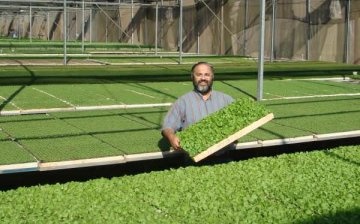
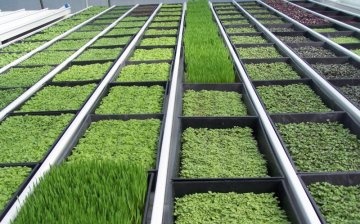
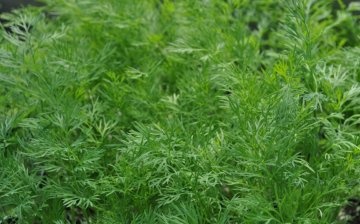
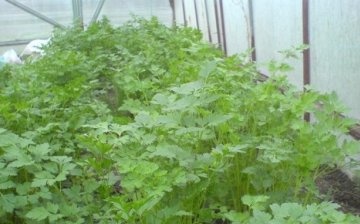
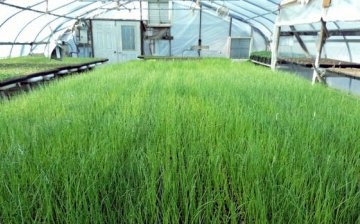
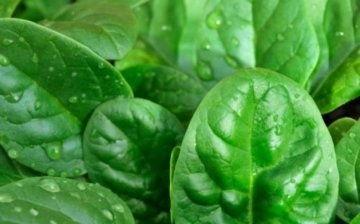








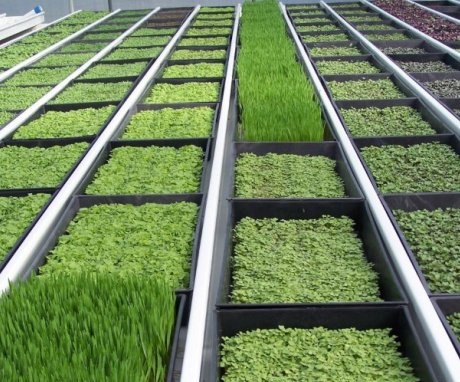

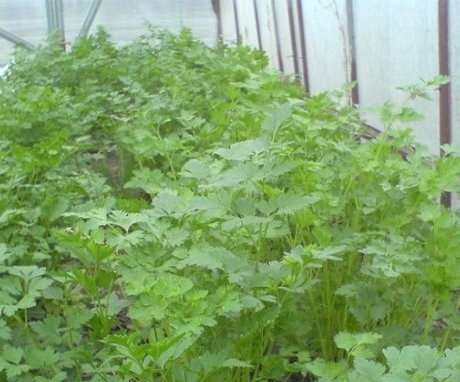
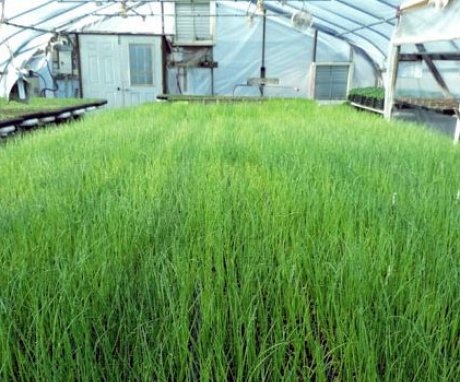
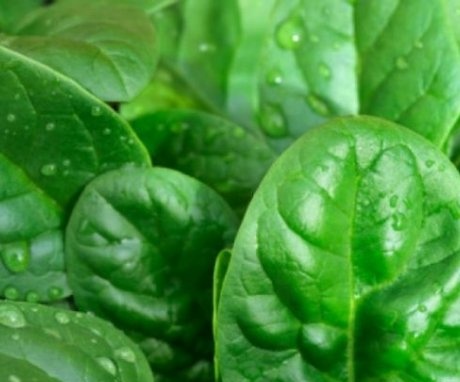
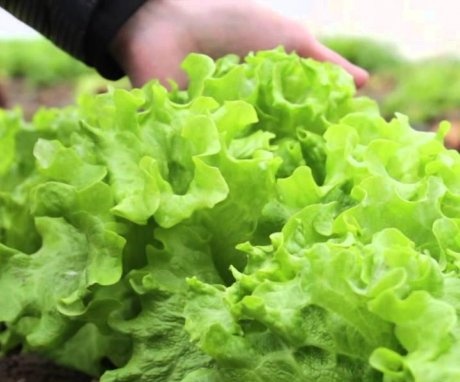
Growing greenery is a very interesting business. It is on the market all year round, though not the whole range. Usually, by the end of the day, all the greens are taken apart and to buy a bunch of dill or green onions, you need to come in the morning. The price of greens is not very low in summer, therefore, it is possible to grow it for sale without greenhouses and greenhouses.
The costs of this business really need to be minimal, so with normal implementation, you can get big profits. But the competition in the market is very high. And there may be problems with the implementation. The assortment could be expanded with exotic herbs, but there will be problems with the climate, even in greenhouses.
At one time I tried to get a small loan to start my own business in this direction.The bank rejected my business plan, or rather demanded additional security, although it seemed realistic to me. And I don't have my own funds yet.